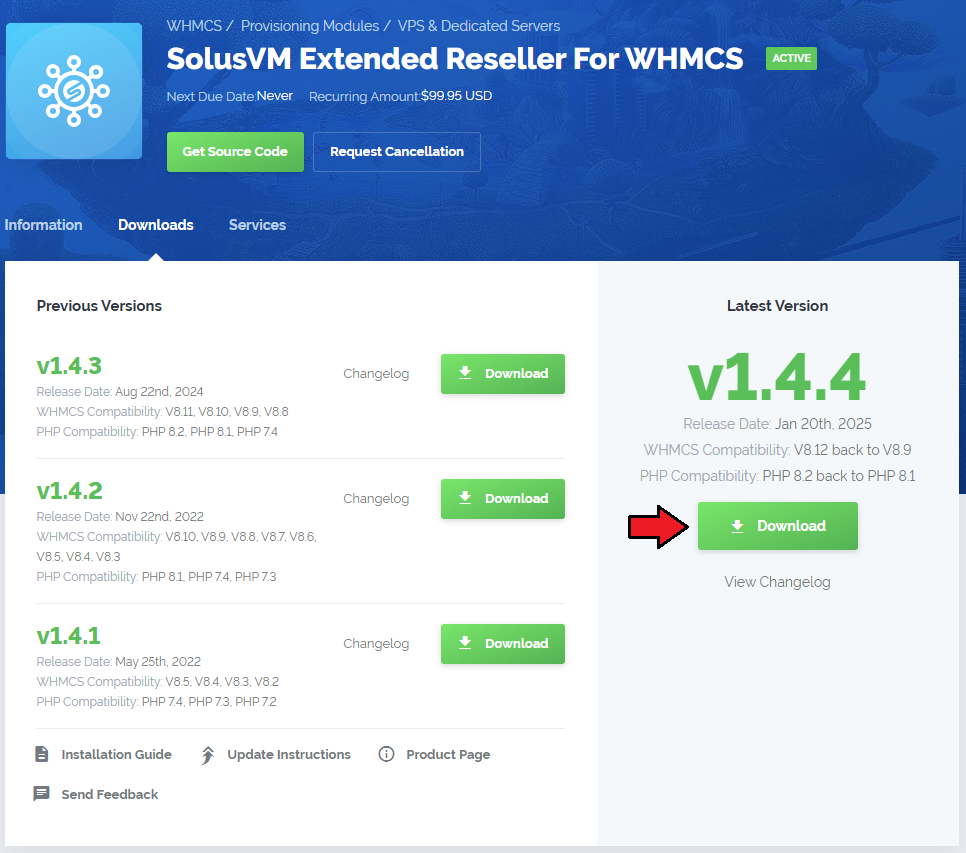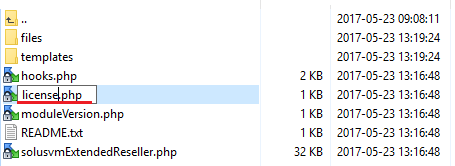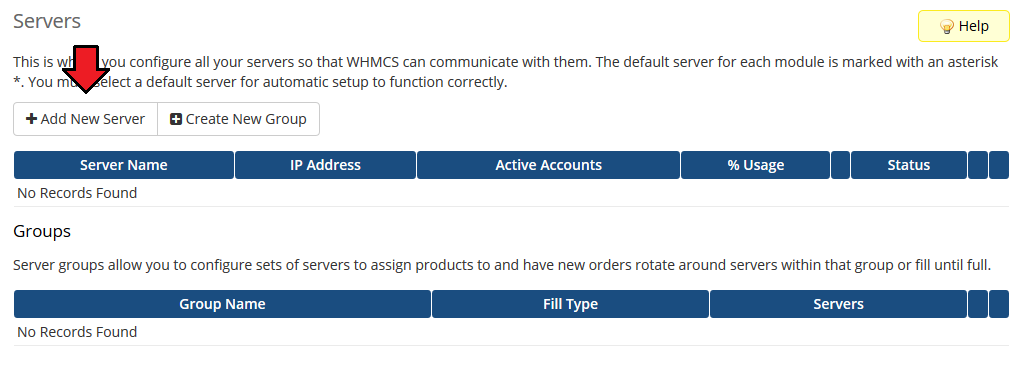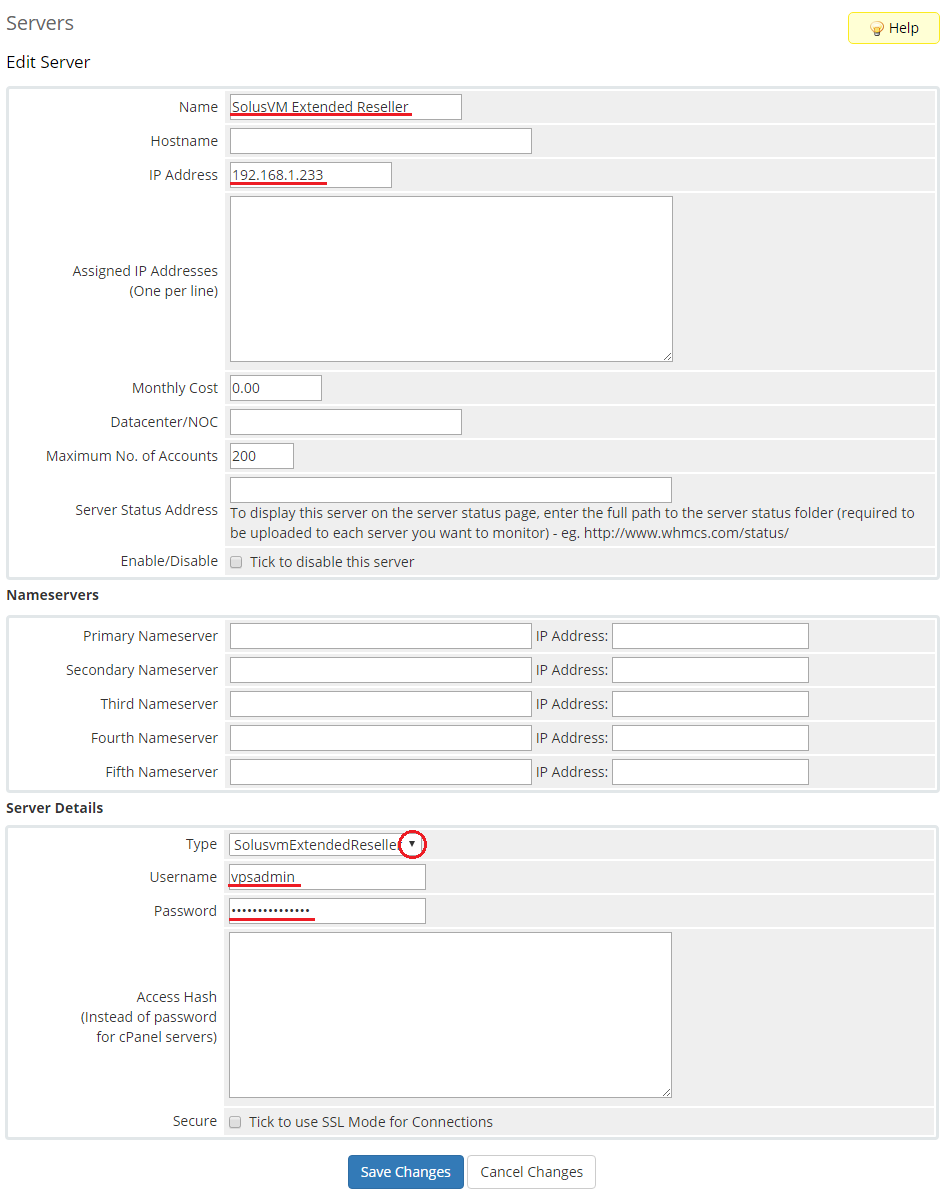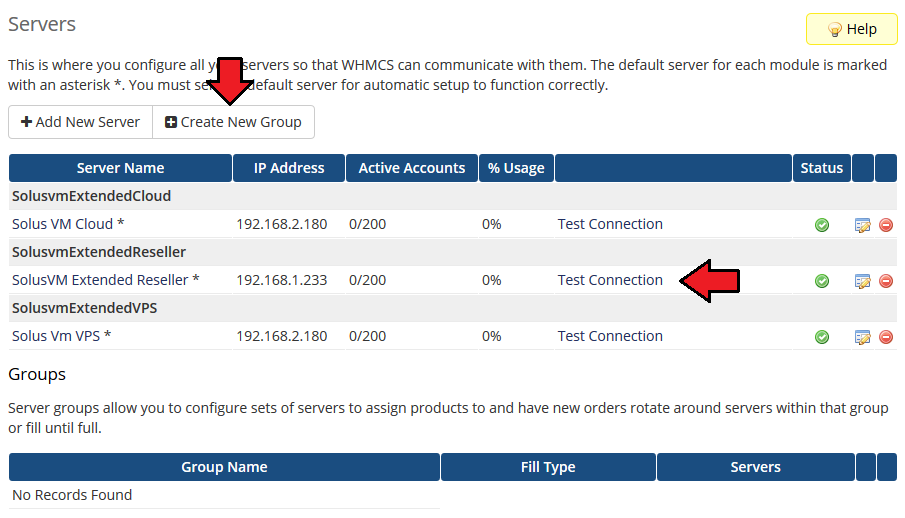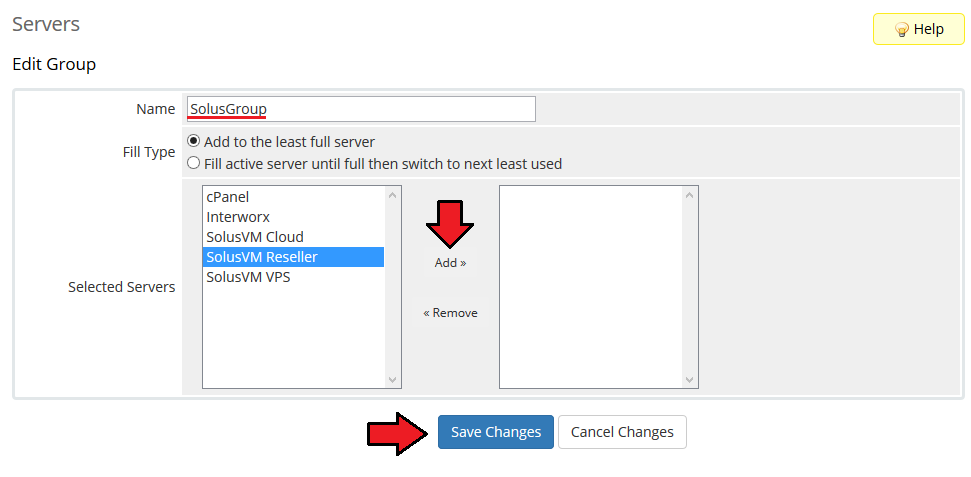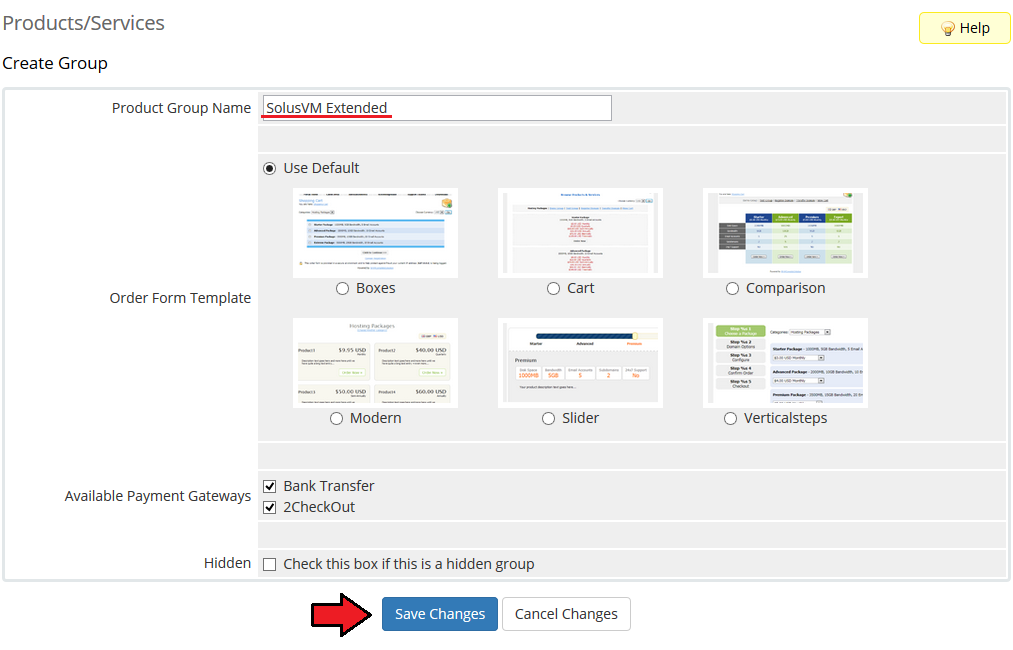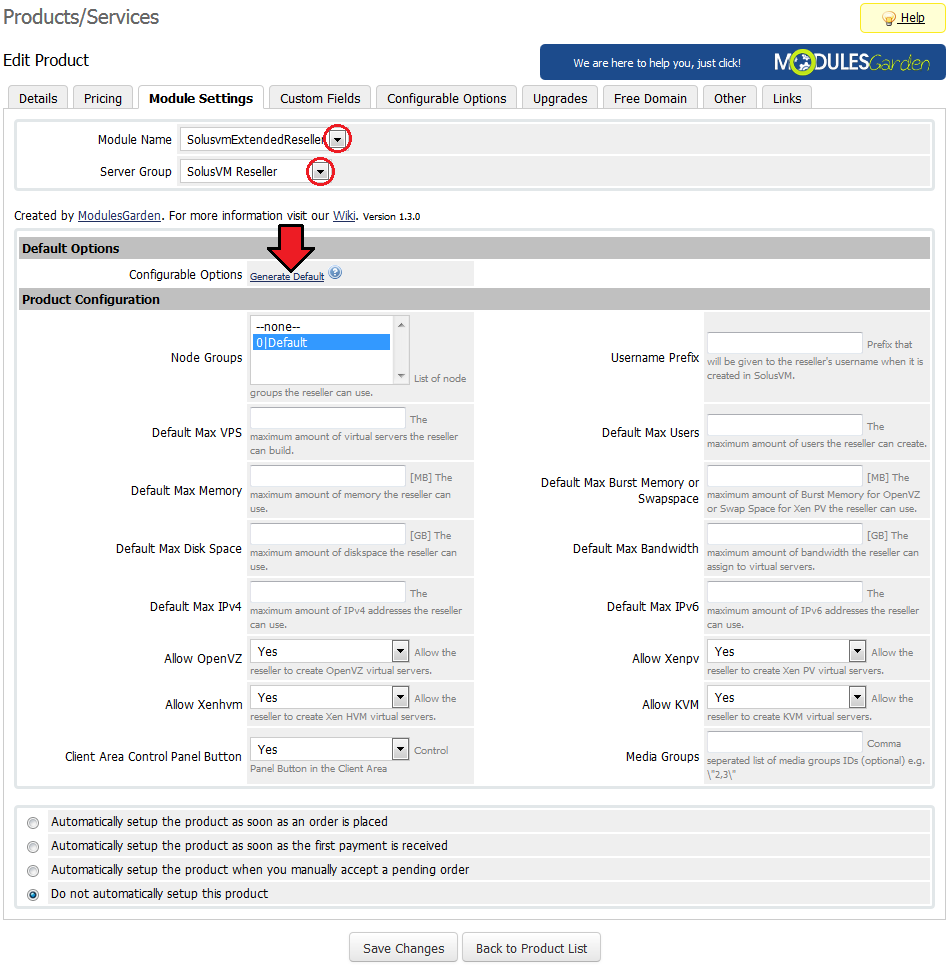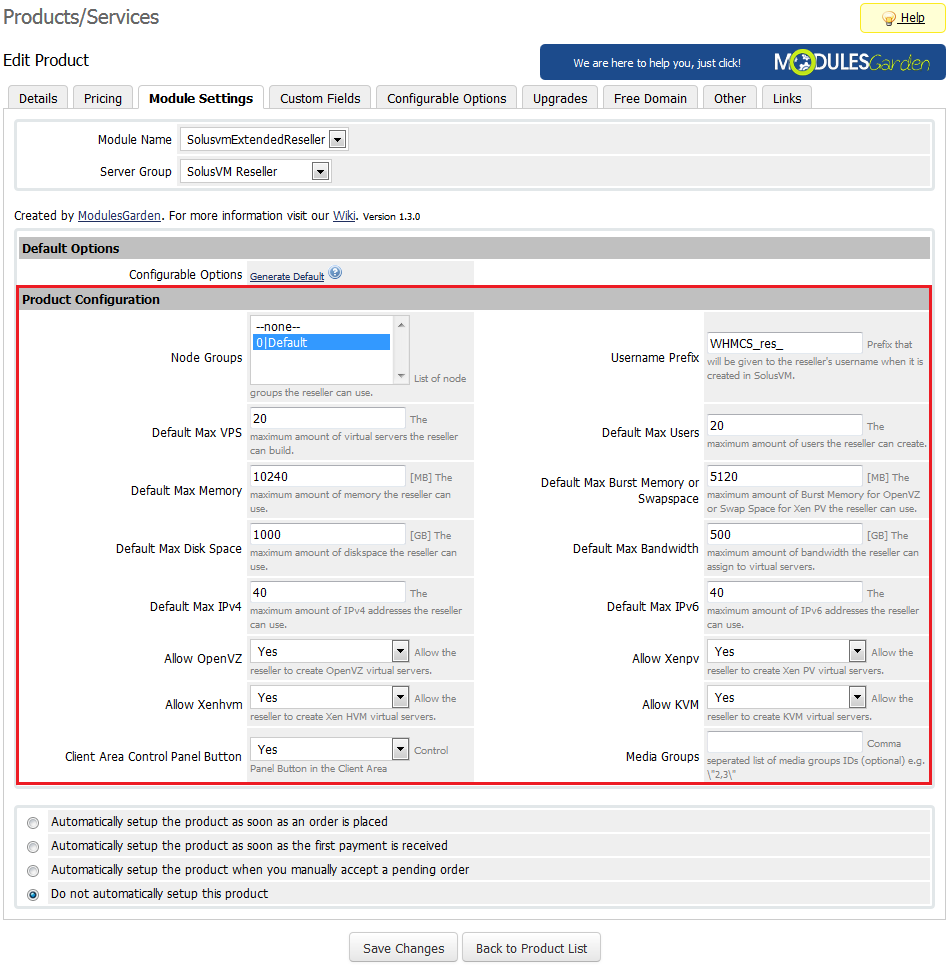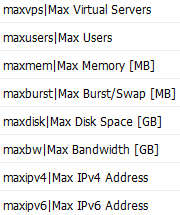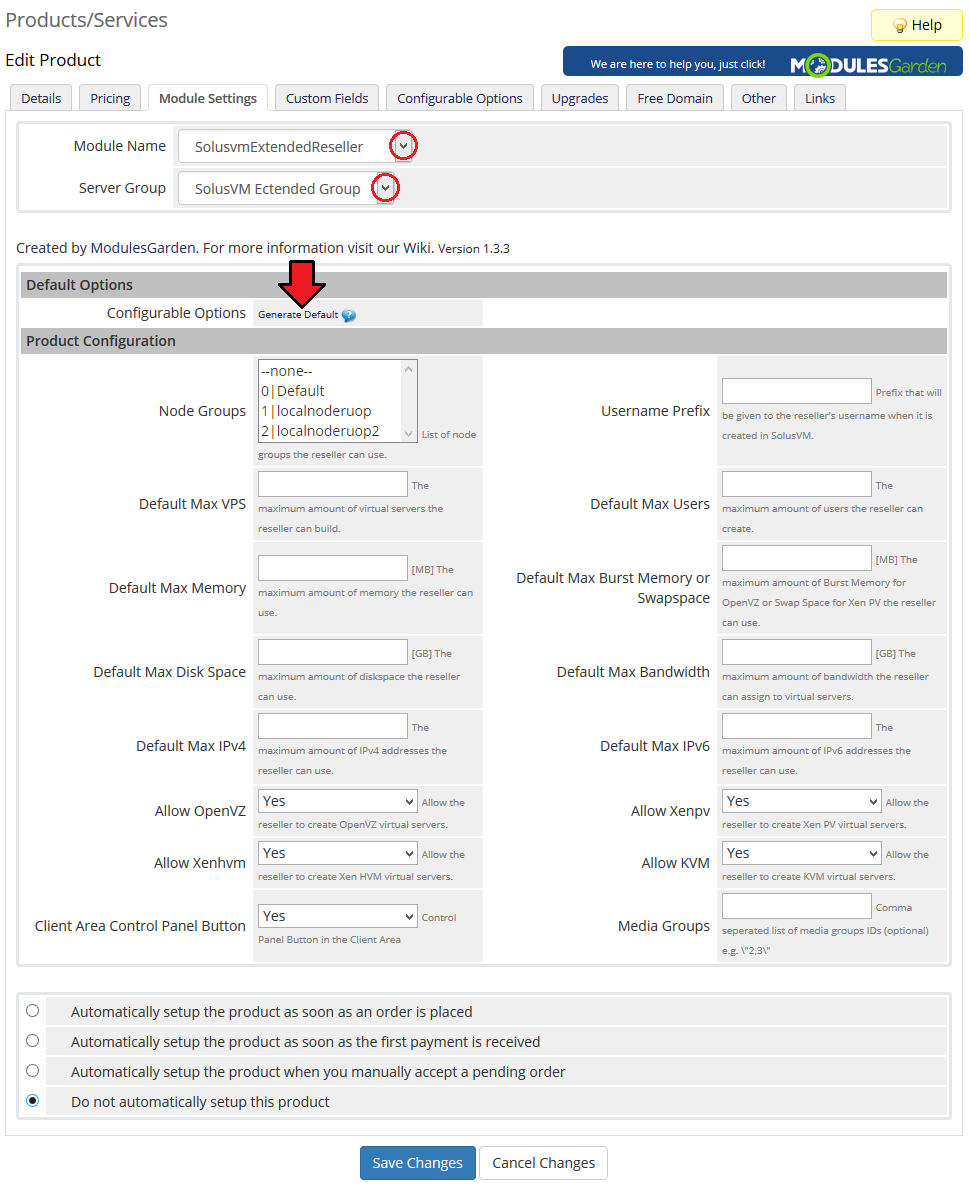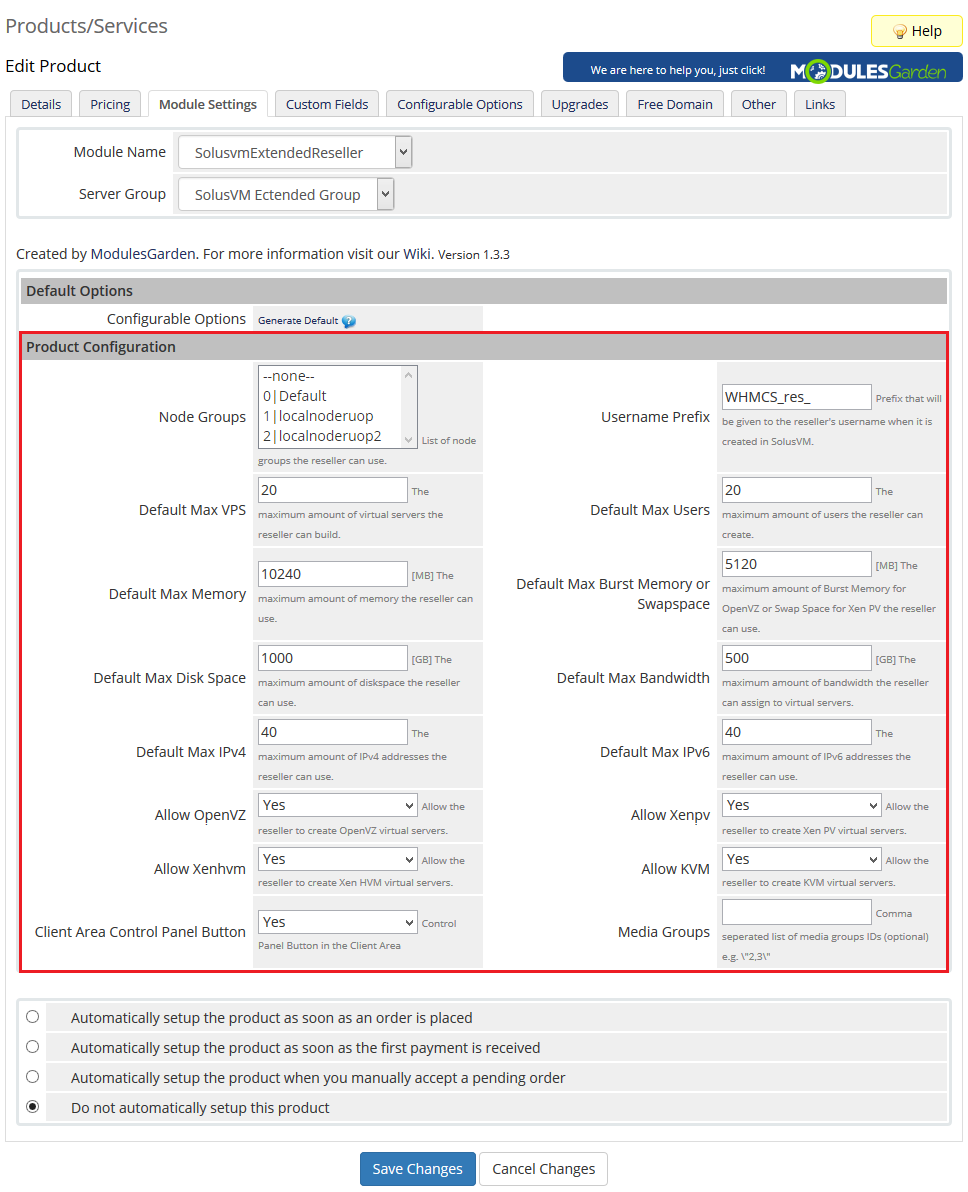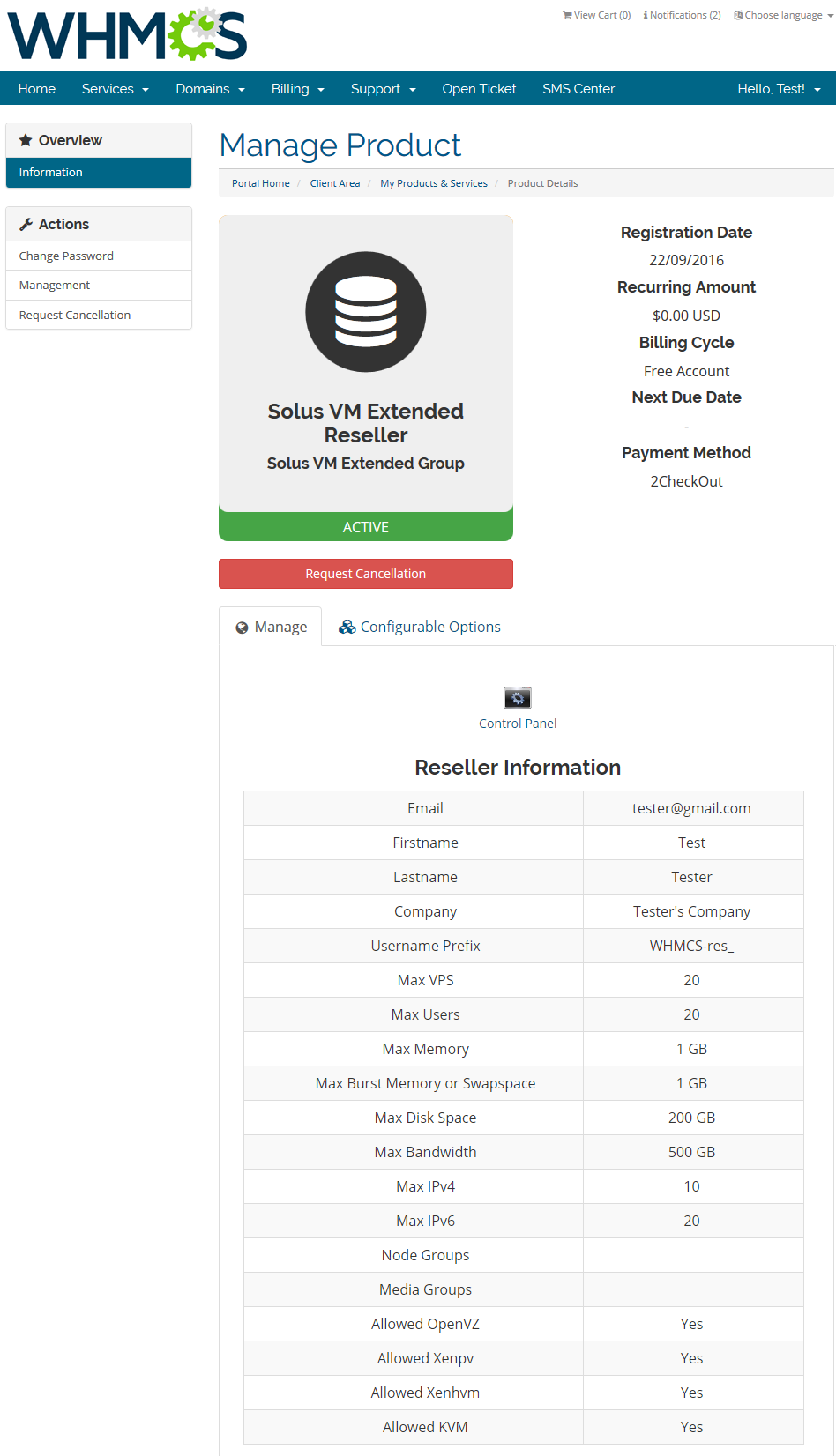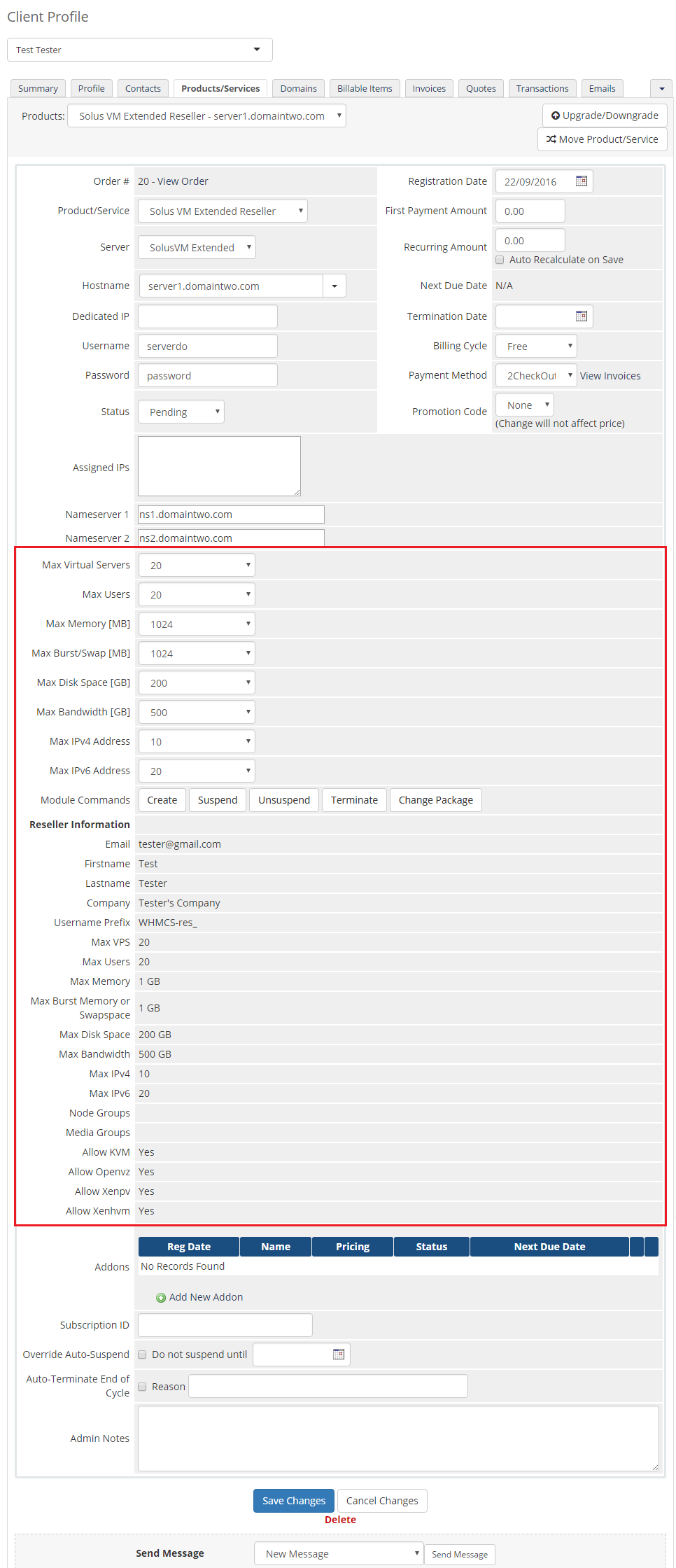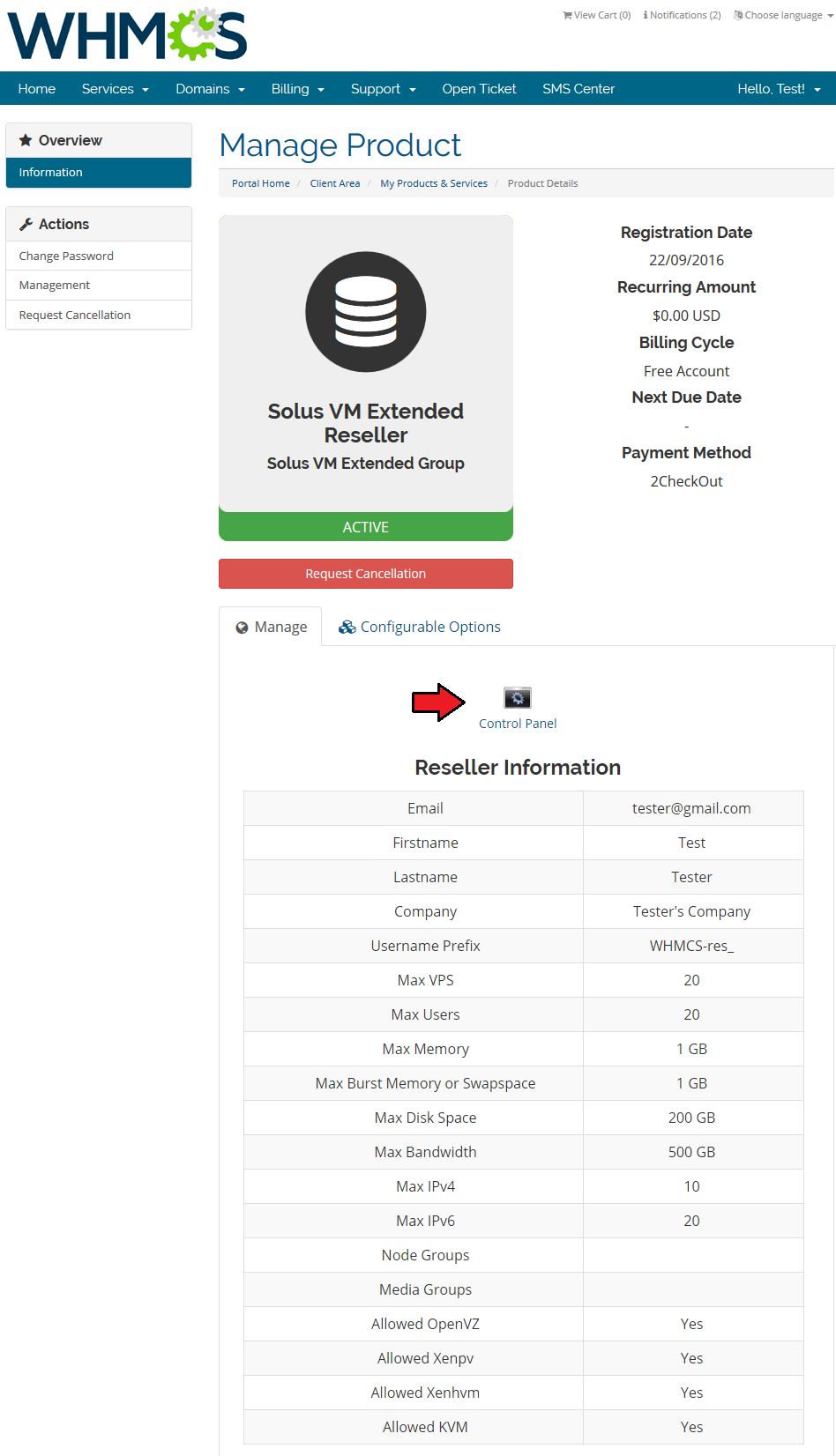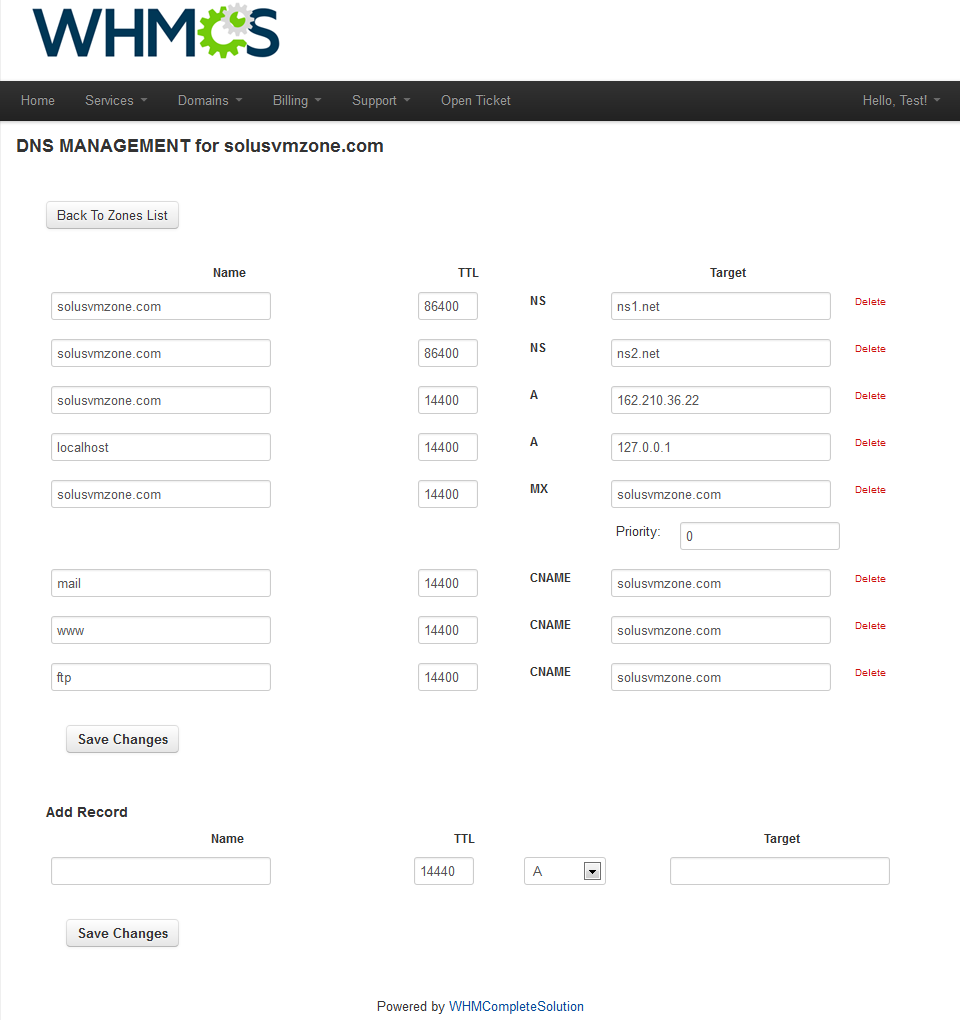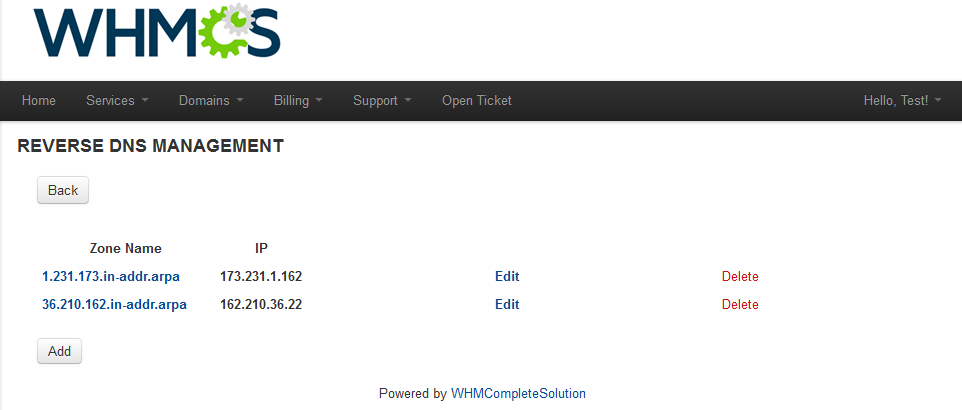SolusVM Extended Reseller For WHMCS
From ModulesGarden Wiki
(Difference between revisions)
|
|
| Line 255: |
Line 255: |
| | =Common Problems= | | =Common Problems= |
| | {| | | {| |
| − | |style="padding: 10px 0px 5px 15px;"|1. By default our module connects with SolusVM server on port 5353. If you are using different port, you need to specify it in the '' 'Hostname' '' field.<br /> | + | |style="padding: 10px 0px 10px 15px;"|'''1. When you have problems with connection, check whether your SELinux or firewall does not block ports.''' |
| − | Default port for SSL connections is 5656. To connect on that port enter your hostname as follows: '' 'yourhostname.com:5656' ''. Keep in mind that you can connect on any port.<br />
| + | |
| − | Field below '' 'Tick to use SSL Mode for Connections' '' switches connection type between http and https. Note that this is something different from choosing the port to connect.
| + | |
| | |} | | |} |
| | {| | | {| |
| Line 266: |
Line 264: |
| | |} | | |} |
| | {| | | {| |
| − | |style="padding: 5px 0px 30px 15px;"|3. When you have problems with connection, check whether your SELinux or firewall is not blocking ports. | + | |style="padding: 5px 0px 30px 15px;"|3. By default our module connects with SolusVM server on port 5353. If you are using different port, you need to specify it in the '' 'Hostname' '' field.<br /> |
| | + | Default port for SSL connections is 5656. To connect on that port enter your hostname as follows: '' 'yourhostname.com:5656' ''. Keep in mind that you can connect on any port.<br /> |
| | + | Field below '' 'Tick to use SSL Mode for Connections' '' switches connection type between http and https. Note that this is something different from choosing the port to connect. |
| | |} | | |} |
Revision as of 09:09, 21 October 2014
SolusVM Extended Reseller For WHMCS is a great solution for every SolusVM server owner who has his own resellers.
Module will allow you to automatically create and provision ready products to your resellers.
Products consists of specified server resources which can be further sold to customers of your resellers.
|
| ✔ View All Possible Server Resources
|
| ✔ Reseller Control Panel Button
|
| ✔ Dynamic Server Resources Setup With Configurable Options
|
| ✔ Combined With DNS Manager For WHMCS - Supports PowerDNS (read more)
|
| ✔ Supports WHMCS V5 and Later
|
- Available Configurable Options:
Installation and Configuration
In this tutorial we will show you how to successfully install SolusVM Extended Reseller For WHMCS.
We will guide you step by step through the whole installation and configuration process.
|
| 1. Log in to your client area and download SolusVM Extended Reseller For WHMCS.
|
2. Upload and extract the module into the main WHMCS directory.
Files in your WHMCS directory should look like this.
|
3. When you install SolusVM Extended Reseller for the first time you have to rename 'license_RENAME.php' file.
File is located in 'modules/servers/solusvmExtendedReseller/license_RENAME.php' . Rename it from 'license_RENAME.php' to 'license.php' .
|
4. In order to configure your license key you have to edit a previously renamed 'license.php' file.
Enter your license key between quotation marks as presented on the following screen. You can find your license key at your client area → 'My Products' .
|
Configuration of API Access
5. Now, we will show you how to configure a new product.
First, log in to your SolusVM admin area, go to 'CONFIGURATION' → 'API Access' and add API User.
|
| 6. Enter your current IP and once again click on 'Add API User' button.
|
Configuration of Server
7. Now, log in to your WHMCS admin area. Press 'Setup' → 'Products/Services' → 'Servers' .
Afterwards, press 'Add New Server' .
|
8. Enter your server name and IP address.
Next, enter your API User ID into 'Username' field and your API User Key into 'Password' field. Choose 'SolusvmExtendedReseller ' from a dropdown menu and press 'Save Changes' .
Here you can also provide other server details like nameservers or maximum number of accounts.
|
9. After you configure your server correctly, you will see a following screen.
Test your connection through pressing on 'Test Connection' . Now, you need to create a new group for your server. For that purpose press 'Create New Group' .
|
| 10. Enter name, click on your previously created server, press 'Add' then press 'Save Changes' .
|
Configuration of Product
11. In order to create and configure product, click on 'Setup' → 'Products/Services' → 'Products/Services' .
If you do not have a product group, click on 'Create a New Group' . If you do, simply go to step 13.
|
| 12. Enter product group name, choose order form template and press 'Save Changes' .
|
13. When you have a product group, you can create your product and assign it with SolusVM Extended Reseller. If you already have a product, go to step 15.
To create a product click on 'Create a New Product' .
|
| 14. Afterwards, choose your product type and product group from dropdown menus, enter your product name and press 'Continue' .
|
15. Now go to 'Module Settings' section, choose both 'SolusvmExtendedReseller' and your previously created server group from dropdown menus.
After you press 'Save Changes' , all the configuration options will load below.
Generate configurable options as shown on the following screen.
|
16. Configuration of the product is grouped into 'Product Configuration' section.
In Product Configuration you can select the functionalities you want to offer your resellers and set servers resources limit.
|
| 17. With configurable options you can allow your customers to place orders perfectly tailored to their needs. Our module offers the following configurable options:
|
| You have just finished the installation and configuration of the module. From this moment your customers can start to place orders!
|
Management
| SolusVM Extended Reseller For WHMCS allows your resellers to monitor server resources and quickly access their reseller control panels.
|
Interface
Now let's check the interface of the module in your WHMCS client area.
As you can see, module displays in one place all the important information for your resellers.
|
| You can monitor and manage each product from your WHMCS admin area.
|
| Your resellers can also quickly access their panels through clicking on 'Control Panel' button.
|
| Voila! One click from WHMCS client area and we are inside Reseller Control Panel.
|
Management of DNS
When you combine SolusVM Extended Reseller For WHMCS With DNS Manager For WHMCS, your clients will be able to manage PowerDNS zones and records from the client area.
DNS Manager For WHMCS will allow your customers to manage DNS zones, records and ReverseDNS.
To connect both modules, go to 'Processing' section of DNS Manager, configure the module, tick 'With Products' and choose SolusVM Extended Reseller product.
|
To provide a DNS management in the client area simply use this address 'your_whmcs_url/clientarea.php?managedns' . Replace 'your_whmcs_url' with address of your whmcs directory.
Dependant on your previously chosen settings, your customers will be able to add, edit and remove DNS zones and records.
|
| Module will also allow your customers to add, edit and remove Reverse DNS zones and records.
|
Tips
1. We made every effort to make our module as easy to install, configure and use, as possible. Therefore we paid special attention to displayed messages.
Read carefully each message, follow the instructions and you shall have no problems with using the module.
|
| 2. Operations performed on the virtual servers are not executed immediately. Give your SolusVM server some time for processing the request and execution of operation.
|
Common Problems
| 1. When you have problems with connection, check whether your SELinux or firewall does not block ports.
|
2. The vast majority of problems are connected with misconfigured SolusVM server or misconfigured servers/products in your WHMCS.
First, make sure that your SolusVM server has properly configured virtual servers, nodes, node groups, templates, plans and API access.
In most cases, appropriate SolusVM server configuration guarantees correct operation of the module.
Afterwards check your WHMCS server connection and products settings. If you are certain that everything is correct, use our Debug Mode.
|
3. By default our module connects with SolusVM server on port 5353. If you are using different port, you need to specify it in the 'Hostname' field.
Default port for SSL connections is 5656. To connect on that port enter your hostname as follows: 'yourhostname.com:5656' . Keep in mind that you can connect on any port.
Field below 'Tick to use SSL Mode for Connections' switches connection type between http and https. Note that this is something different from choosing the port to connect.
|
